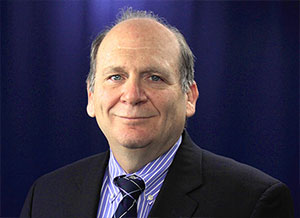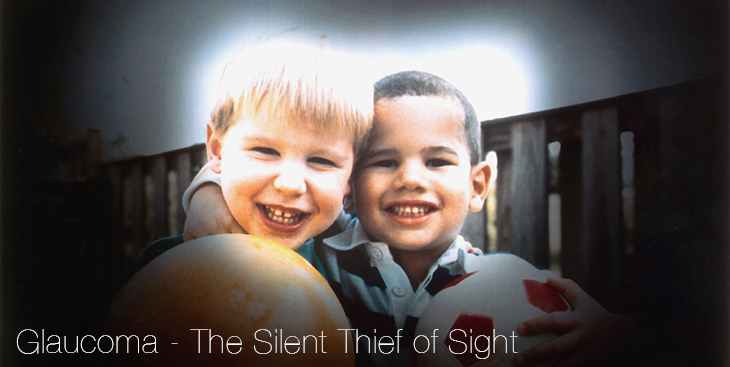Glaucoma – The Silent Thief of Sight
Did you know that 3 million people in the United States have Glaucoma and half of those people don’t even know they have it?
Glaucoma is the second leading cause of blindness in the United States. The risk of being diagnosed with glaucoma increases if you, have a family history of the disease or are over 65.
There are several types of glaucoma, but they all have one thing in common; damaging the optical nerve in the back of the eye. Normally, fluid called aqueous humor flows out of the eye through a mesh-like channel. If this channel becomes blocked, fluids build up and cause pressure. The high pressure can “push” against the optic nerve and damage it. The peripheral vision is affected first, followed by a reduction in central vision and if not treated in early stages, blindness can occur. This disease gradually destroys your vision so you will hardly notice it is even occurring.
Because glaucoma sneaks up on its victims with no early symptoms or pain, visiting an eye doctor every one or two years is essential for your eye health. Although glaucoma cannot be prevented, blindness from glaucoma can be through early detection and appropriate treatment.
Eye drops, laser therapy and surgery are the conventional treatments and are required if peripheral vision continues to worsen. There are also other ways to aid in the management of this sight stealing disease:
- Reduce alcohol and caffeine intake
- Maintain a healthy diet rich in carotenoids (especially lutein and zeaxanthin), antioxidants (such vitamins C and E), vitamins A and D, zinc and omega-3 fatty acids which all contribute to better vision.
- Exercise 30 to 40 minutes daily
- Lower your insulin levels
- Quit smoking
- Take deep breaths, which will affect your blood pressure and heart rate positively.
- Loosen your tie! A tie that is on too tight compresses the jugular veins, raising interocular pressure and can eventually increase the risk for glaucoma in men.
- Be aware of the medicine you are taking! Prescription drugs for bladder control, seizures, or even certain over-the-counter cold remedies, can increase glaucoma risk.
- Protect your eyes from the sun and during sport activities.
Age-Related Vision Problems
As you age, so do your eyes. You might have trouble reading fine print or need brighter lights in your workspace. Some age-related eye changes are very common and do not signify any sort of disease. Other changes, although still common among senior citizens, can indicate a problem.
1. A cataract is a clouding of the lens, a transparent, layered structure that is found behind the iris. A cataract may begin to form as early as the age of 40 or 50 and can go unnoticed. By 60, the cataract may have advanced enough to cause lower vision. In most cases, people with cataracts can undergo surgical treatment to restore adequate vision.
2. Age-related-macular degeneration destroys the macula, which is a cluster of light-sensitive cells in the center of the retina. The macula is responsible for crisp vision and fine perception of detail. Over 15 million Americans have AMD and it is the leading cause for low vision in those over age 60. Early diagnosis and follow-up appointments with your doctor are essential for preserving vision in people with AMD.
3. Glaucoma is a group of diseases in which the optic nerve begins to damage due to excessive fluid pressure in the eyeball. In people with open-angle glaucoma, the most common type, fluid drainage fails to keep pace with the output. Then, pressure builds on the optic nerve as fluid levels continue to rise. This process occurs so gradually that it may only be noticeable once vision loss has occurred. In some cases, the optic nerve can become so damaged that it is unable to send complete signals to the brain. Those over 60 are at a greater risk for developing glaucoma. Treatment includes medication, laser therapy or surgery.
4. Diabetic Retinopathy is the most common diabetic eye disease and contributes to the leading cause of blindness in elderly Americans. In some people with diabetic retinopathy, blood vessels swell and leak fluid. In other cases, new vessels may grow on the surface of the retina. At first, the changes can go unnoticed, but over time diabetic retinopathy can worsen, causing vision loss. Diabetic retinopathy usually affects both eyes.
5. Presbyopia refers to the farsightedness that develops when the lens of the eye and its surrounding muscles lose their elasticity, causing the muscle fibers to become too rigid to contract or relax properly. As a result, they can no longer focus light well enough to produce clear and crisp vision images. This condition can easily be corrected with reading glasses, bi- or trifocals, contact lenses or surgery.
6. Ptosis describes the droopy, hooded eyelid characteristics that occur with aging. If the drooping becomes too extreme that it causes obscure vision, surgery can be considered.
Rand Eye Institute can assist you in delaying these problems and find the right solution for you.
Glaucoma Awareness Month
 Irving Estrin, M.D.
Irving Estrin, M.D.
Assistant Medical Director
This month is Glaucoma Awareness month, which is sponsored by the American Academy of Ophthalmology.
The diagnosis of glaucoma is something that is very difficult for most people to grasp. Glaucoma is one of the leading causes of blindness in the United States.Most of the patients who presently have glaucoma are totally unaware that they have this disease. Glaucoma usually is a disease that is without pain and silent when it comes to any signs or symptoms.
Most people that are diagnosed with glaucoma visited their eye doctor and came out with the surprising results of glaucoma. This unfortunately leaves many people in the United States without appropriate treatment. Most people should be aware that after age forty, they should have at least a bi-annual eye exam and by age sixty, an annual eye exam. Clinical eye diseases are detectable only through proper eye doctor examination. Since glaucoma is painless and not seen until it is fairly advanced by the patient, one should be cognizant that their eye exam should be done on a regular basis.
This disease continues to be a leading irreversible cause of blindness unless detected and treated at an early stage in its development. About one out of six people in the United States will develop glaucoma at some point in their lives. I suggest there should be an eye exam done on a regular basis through their eye care professional and starting in their early forties.


